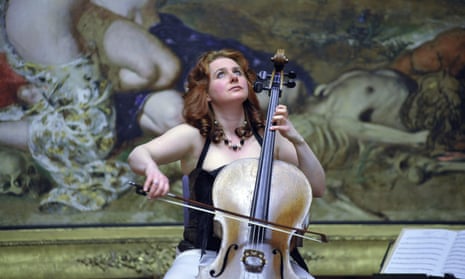There’s been a gear change at Manchester Camerata over the past two years. Our ambition to “redefine what an orchestra can do” has seen us achieve extraordinary things, not least a 51% increase in new audiences for 2014-15. What have we learned that may help your organisation entice new people through the door? Here are five things we’ve done.
Engage the whole organisation
Audience development isn’t solely the job of the marketing and comms professionals in your organisation (if you have them); it’s an organisation-wide endeavour, from programming through to community engagement, which starts with knowing your brand inside out.
In 2013, we in the Camerata management team swapped the city hustle and bustle for two days of Whitby sea air to refine our 2015-18 strategy. We spent the time revising our vision and purpose – the crux of why the orchestra exists and where we’re headed. It may sound like a lot of time to achieve just that, but it was time well spent. We left with a shared understanding of our brand and a clear vision that now informs decision making across the company: to redefine what an orchestra can do. Our programming and marketing are closely aligned, which means we think about audience development before even considering print deadlines.
Know your audience
There are myriad segmentation tools out there, so it’s quite easy to find out the profile of your audience to inform your plans. Analysis of our box office data – using, in this case, the Audience Agency’s Audience Spectrum segmentation tool – confirmed hunches we’d had about our audience profile. It also identified growth markets, for example experience seekers: a younger, culturally diverse group of arts attendees who are looking for an all-round experience.
Introducing more social elements to our events, such as pop-up gin bars, quirky venues and inviting the audience to sit on stage with the orchestra, has attracted a much higher proportion of this group (30% in the case of our UpClose series audience). Beyond data (other recommended analysis tools include Acorn and Mosaic) we take time to speak and listen to our audience members – and, importantly, our artists – to help inform what we do.
Digital
In the hunt for new audiences we’ve had great success with digital marketing, although we have learned lessons along the way.
Online advertising through sites such as Travelzoo and Amazon Local has really worked for us. But local deals sites such as these tend to generate better returns for programmes with wider appeal, where more traditional programmes have struggled. Our 2015-16 season opener, for example, featured an eclectic mix of music from Beethoven to the Beatles. We sold more than 400 tickets through these channels, with 20% new attendees on the night.
Paid ads through Facebook have also generally been more effective for quirky events. For example, the ad for our sell-out blindfold gig generated more than 1,000 clicks to the website.
Data is king, so share it
Data is crucial to audience development, yet it still baffles me to find marketers who are reluctant to share (consumer permissions granted of course). You lose out if you’re territorial about your audience. If you’ve done your research, you’ll be approaching organisations with audiences relevant to your offer.
With the Arts Council’s Audience Finder – a national audience development tool that enables cultural organisations to compare and share audience insight – it’s easier than ever to know which organisations are a good match for you. Reciprocal marketing could be so much more effective if more people were open to sharing. With audience development, you can either dip your toe, or go full throttle. We’ve found you get more return from the full-throttle approach.
Collaborate
We’re also cultivating new audiences by doing what we do best: collaboration. Partnering with a range of organisations means we can reach a much wider audience who wouldn’t necessarily know about us. That said, we choose our partners carefully; there has to be a brand fit.
We recently joined forces with Caffè Nero. With a shared ambition to enrich the customer experience, we soon realised that we could help each other diversify our customer bases. This month, we’ve profiled our new season across Caffè Nero stores in Manchester, offering concert discounts to its customers. Another good example is our artistic collaboration with the DJs behind the Haçienda, for which both dates sold out within minutes – the result of creating something genuinely together.
There’s confidence in collaboration. You don’t need a massive marketing budget, just a creative mind and a lot of gumption.
Paul Davies is head of marketing and comms at Manchester Camerata
Join our community of arts, culture and creative professionals by signing up free to the Guardian Culture Pros Network.

Comments (…)
Sign in or create your Guardian account to join the discussion